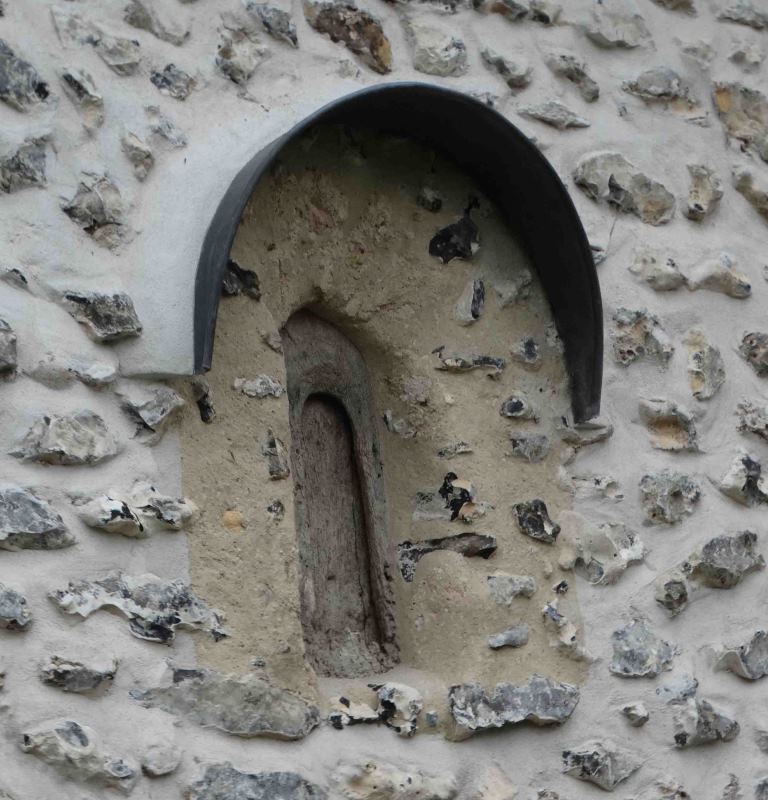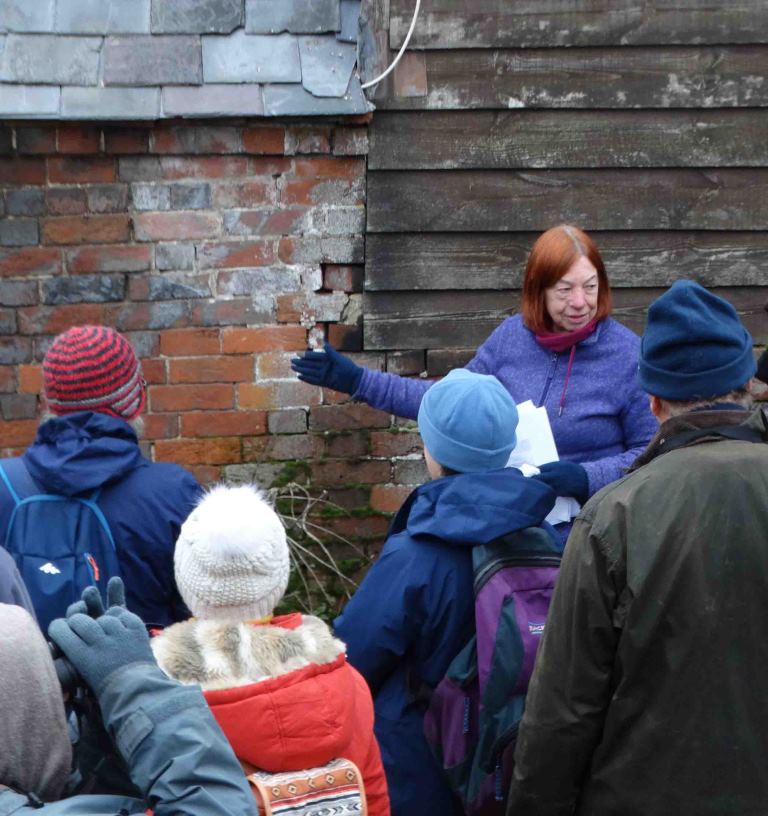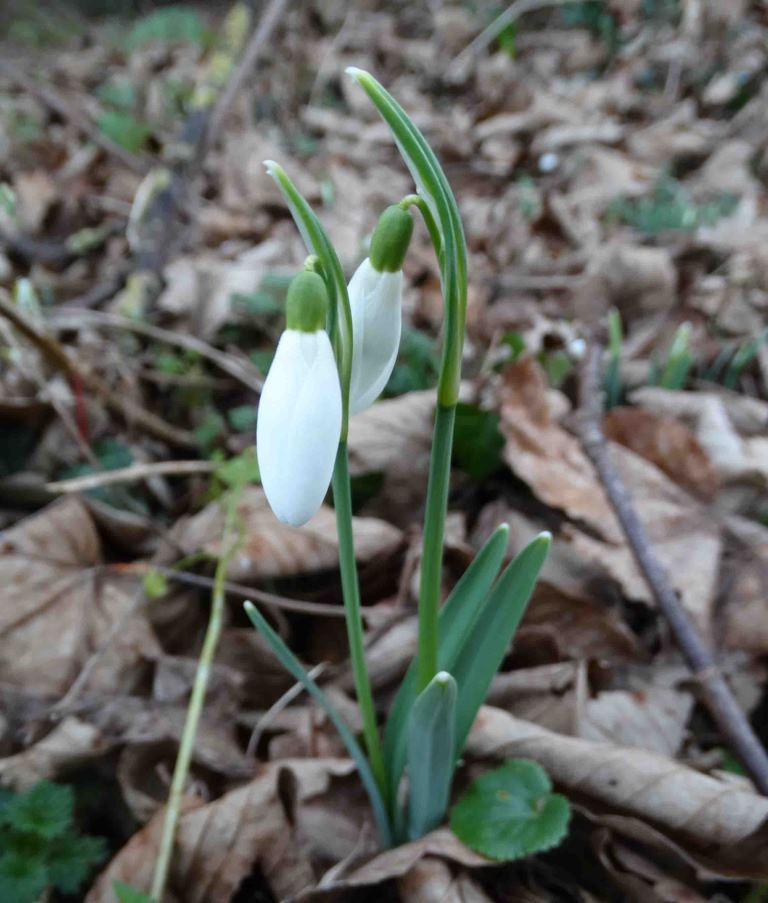The first field trip of 2019 was a geology walk at Boxford, led by Lesley Dunlop. 19 members and guests met outside St Andrew’s Church on the cold, grey morning of Saturday 5 January. The walk started in the churchyard. On the north wall is a narrow Saxon window with a wooden shutter. The walls of the church were constructed with flints and chalk rubble, while Cotswold limestone was used for the corner stones. Within the walls were a few blocks of local chalk, including one with a hole which had once supported a mass dial. Lesley pointed out that the limestone tombstones had patches of yellow and white lichen, while a sandstone tombstone was covered with lime-green lichen. The song of a Mistle Thrush was heard and it was seen to fly out of a clump of Mistletoe on a tall tree nearby. Next stop was Boxford chalk pit. It is a SSSI, designated for its geological interest. It was not possible to get close to the chalk face, and a lot of vegetation is screening the surface. But apparently the chalk face shows signs of tectonic activity. Tilted Chalk beds are overlain by fractured and folded Chalk, which has been interpreted as evidence of localised Upper Cretaceous severe basement faulting, which is unknown from elsewhere in Britain. Thin layers contain fossil teeth of sharks and dog-fish.
The walk continued down a footpath to the River Lambourn, which was flowing fast and crystal clear over a bed of gravel, over a bridge and onto the Boxford Water Meadows, another SSSI. Lesley pointed out that the River Lambourn deviates from its north-west to south-east course at Boxford, and follows a big meander around the meadows. This may be further evidence of faulting and tectonic activity. Beneath the meadows is a peat layer which is about 2.5 metres deep. This rests on a layer of sharply pointed river gravel, which lies in turn on the Chalk bedrock. Analysis of the pollen in a peat core sample shows that the peat was laid down, with some gaps, over about 9000 years. The pollen in the lowest layers indicates that the landscape was initially wooded, while higher up there are more grass pollens. At this point, a Little Egret flew overhead. Next stop was Westbrook Farm, reached by a footpath which crossed a grassy field at the bottom of the Chalk slope. Lesley pointed out the red and grey bricks on an outbuilding next to the track. The grey bricks were glazed and were fired at a higher temperature. Several of them showed a glassy surface. The building had a slate roof, which became possible when the railway came to the valley. Older buildings in the village are roofed with thatch or local tiles. The walk continued along Westbrook. Lane, which had old cottages on both sides. The lane is a little higher than the adjacent water meadows and lies on a drier gravel terrace. Several big sarsen stones were noted on the verge outside one of the cottages and the first Snowdrop flowers were seen. A Little Egret got up from its perch in a riverside tree and flew away, followed by a Grey Heron. Tall Ash, Alder and Poplar trees lined the road back to the mill and the church, but only the Poplars had clumps of Mistletoe.




